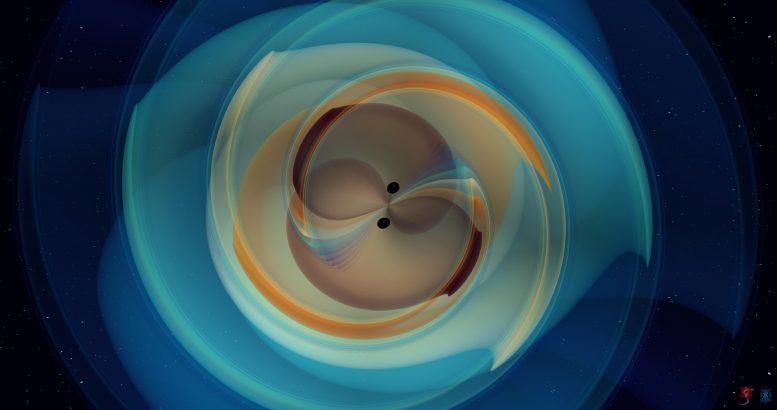
Numerical simulation of two black holes that inspiral and merge, emitting gravitational waves. The black holes have large and nearly equal masses, with one only 3% more massive than the other. The simulated gravitational wave signal is consistent with the observation made by the LIGO and Virgo gravitational wave detectors on May 21st, 2019 (GW190521). Credit: N. Fischer, H. Pfeiffer, A. Buonanno (Max Planck Institute for Gravitational Physics), Simulating eXtreme Spacetimes (SXS) Collaboration
A binary black hole merger likely produced gravitational waves equal to the energy of eight suns.
For all its vast emptiness, the universe is humming with activity in the form of gravitational waves. Produced by extreme astrophysical phenomena, these reverberations ripple forth and shake the fabric of space-time, like the clang of a cosmic bell.
Now researchers have detected a signal from what may be the most massive black hole merger yet observed in gravitational waves. The product of the merger is the first clear detection of an “intermediate-mass” black hole, with a mass between 100 and 1,000 times that of the sun.
They detected the signal, which they have labeled GW190521, on May 21, 2019, with the National Science Foundation’s Laser Interferometer Gravitational-wave Observatory (LIGO), a pair of identical, 4-kilometer-long (2.5-mile-long) interferometers in the United States; and Virgo, a 3-kilometer-long (1.9-mile-long) detector in Italy.
The signal, resembling about four short wiggles, is extremely brief in duration, lasting less than one-tenth of a second. From what the researchers can tell, GW190521 was generated by a source that is roughly 5 gigaparsecs away, when the universe was about half its age, making it one of the most distant gravitational-wave sources detected so far.
As for what produced this signal, based on a powerful suite of state-of-the-art computational and modeling tools, scientists think that GW190521 was most likely generated by a binary black hole merger with unusual properties.
Almost every confirmed gravitational-wave signal to date has been from a binary merger, either between two black holes or two neutron stars. This newest merger appears to be the most massive yet, involving two inspiraling black holes with masses about 85 and 66 times the mass of the sun.
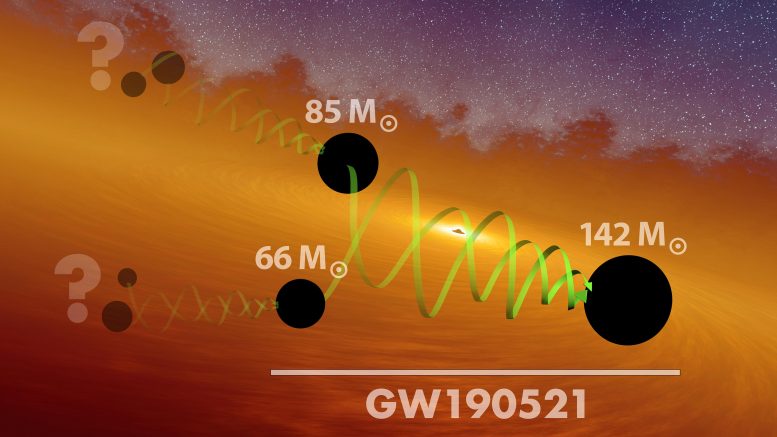
This artist’s concept illustrates a hierarchical scheme for merging black holes. LIGO and Virgo recently observed a black hole merger with a final mass of 142 times that of the sun, making it the largest of its kind observed in gravitational waves to date. Credit: LIGO/Caltech/MIT/R. Hurt (IPAC)
The LIGO-Virgo team has also measured each black hole’s spin and discovered that as the black holes were circling ever closer together, they could have been spinning about their own axes, at angles that were out of alignment with the axis of their orbit. The black holes’ misaligned spins likely caused their orbits to wobble, or “precess,” as the two Goliaths spiraled toward each other.
The new signal likely represents the instant that the two black holes merged. The merger created an even more massive black hole, of about 142 solar masses, and released an enormous amount of energy, equivalent to around 8 solar masses, spread across the universe in the form of gravitational waves.
“This doesn’t look much like a chirp, which is what we typically detect,” says Virgo member Nelson Christensen, a researcher at the French National Centre for Scientific Research (CNRS), comparing the signal to LIGO’s first detection of gravitational waves in 2015. “This is more like something that goes ‘bang,’ and it’s the most massive signal LIGO and Virgo have seen.”
The international team of scientists, who make up the LIGO Scientific Collaboration (LSC) and the Virgo Collaboration, have reported their findings in two papers published today. One, appearing in Physical Review Letters, details the discovery, and the other, in The Astrophysical Journal Letters, discusses the signal’s physical properties and astrophysical implications.
“LIGO once again surprises us not just with the detection of black holes in sizes that are difficult to explain, but doing it using techniques that were not designed specifically for stellar mergers,” says Pedro Marronetti, program director for gravitational physics at the National Science Foundation. “This is of tremendous importance since it showcases the instrument’s ability to detect signals from completely unforeseen astrophysical events. LIGO shows that it can also observe the unexpected.”
In the mass gap
The uniquely large masses of the two inspiraling black holes, as well as the final black hole, raise a slew of questions regarding their formation.
All of the black holes observed to date fit within either of two categories: stellar-mass black holes, which measure from a few solar masses up to tens of solar masses and are thought to form when massive stars die; or supermassive black holes, such as the one at the center of the Milky Way galaxy, that are from hundreds of thousands, to billions of times that of our sun.
However, the final 142-solar-mass black hole produced by the GW190521 merger lies within an intermediate mass range between stellar-mass and supermassive black holes — the first of its kind ever detected.
The two progenitor black holes that produced the final black hole also seem to be unique in their size. They’re so massive that scientists suspect one or both of them may not have formed from a collapsing star, as most stellar-mass black holes do.
According to the physics of stellar evolution, outward pressure from the photons and gas in a star’s core support it against the force of gravity pushing inward, so that the star is stable, like the sun. After the core of a massive star fuses nuclei as heavy as iron, it can no longer produce enough pressure to support the outer layers. When this outward pressure is less than gravity, the star collapses under its own weight, in an explosion called a core-collapse supernova, that can leave behind a black hole.
This process can explain how stars as massive as 130 solar masses can produce black holes that are up to 65 solar masses. But for heavier stars, a phenomenon known as “pair instability” is thought to kick in. When the core’s photons become extremely energetic, they can morph into an electron and antielectron pair. These pairs generate less pressure than photons, causing the star to become unstable against gravitational collapse, and the resulting explosion is strong enough to leave nothing behind. Even more massive stars, above 200 solar masses, would eventually collapse directly into a black hole of at least 120 solar masses. A collapsing star, then, should not be able to produce a black hole between approximately 65 and 120 solar masses — a range that is known as the “pair instability mass gap.”
But now, the heavier of the two black holes that produced the GW190521 signal, at 85 solar masses, is the first so far detected within the pair-instability mass gap.
“The fact that we’re seeing a black hole in this mass gap will make a lot of astrophysicists scratch their heads and try to figure out how these black holes were made,” says Christensen, who is the director of the Artemis Laboratory at the Nice Observatory in France.
One possibility, which the researchers consider in their second paper, is a hierarchical merger, in which the two progenitor black holes themselves may have formed from the merging of two smaller black holes, before migrating together and eventually merging.
“This event opens more questions than it provides answers,” says LIGO member Alan Weinstein, professor of physics at Caltech. “From the perspective of discovery and physics, it’s a very exciting thing.”
“Something unexpected”
There are many remaining questions regarding GW190521.
As LIGO and Virgo detectors listen for gravitational waves passing through Earth, automated searches comb through the incoming data for interesting signals. These searches can use two different methods: algorithms that pick out specific wave patterns in the data that may have been produced by compact binary systems; and more general “burst” searches, which essentially look for anything out of the ordinary.
LIGO member Salvatore Vitale, assistant professor of physics at MIT, likens compact binary searches to “passing a comb through data, that will catch things in a certain spacing,” in contrast to burst searches that are more of a “catch-all” approach.
In the case of GW190521, it was a burst search that picked up the signal slightly more clearly, opening the very small chance that the gravitational waves arose from something other than a binary merger.
“The bar for asserting we’ve discovered something new is very high,” Weinstein says. “So we typically apply Occam’s razor: The simpler solution is the better one, which in this case is a binary black hole.”
But what if something entirely new produced these gravitational waves? It’s a tantalizing prospect, and in their paper the scientists briefly consider other sources in the universe that might have produced the signal they detected. For instance, perhaps the gravitational waves were emitted by a collapsing star in our galaxy. The signal could also be from a cosmic string produced just after the universe inflated in its earliest moments — although neither of these exotic possibilities matches the data as well as a binary merger.
“Since we first turned on LIGO, everything we’ve observed with confidence has been a collision of black holes or neutron stars,” Weinstein says “This is the one event where our analysis allows the possibility that this event is not such a collision. Although this event is consistent with being from an exceptionally massive binary black hole merger, and alternative explanations are disfavored, it is pushing the boundaries of our confidence. And that potentially makes it extremely exciting. Because we have all been hoping for something new, something unexpected, that could challenge what we’ve learned already. This event has the potential for doing that.”
Read Quick ‘Bang’ Signals the Most Massive Gravitational-Wave Source Ever Detected for more on this research.
References:
“GW190521: A Binary Black Hole Merger with a Total Mass of 150 M⊙” by R. Abbott et al. (LIGO Scientific Collaboration and Virgo Collaboration), 2 September 2020, Physical Review Letters.
DOI: 10.1103/PhysRevLett.125.101102
“Properties and Astrophysical Implications of the 150 Solar Mass Binary Black Hole Merger GW190521” by R. Abbott, T. D. Abbott, S. Abraham, F. Acernese, K. Ackley, C. Adams, R. X. Adhikari, V. B. Adya, C. Affeldt, M. Agathos … 2 September 2020, Astrophysical Journal Letters.
DOI: 10.3847/2041-8213/aba493
This research was funded by the U.S. National Science Foundation.




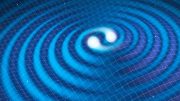

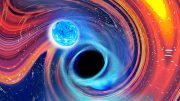
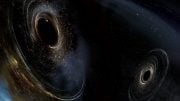
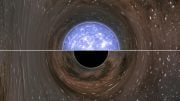
The big black hole merger is of course big news in many ways. That we can find black holes in these ranges means there is no principle problem of growing super massive black holes as regards size, even if we still don’t know how they grow so large so quickly.
But there are clues in the accompanying commentary article in Physical Review Letters.
“The spins of the merging black holes could help in distinguishing the two scenarios [the black holes in the binary result from the collapse of two stars in a binary system, or the most massive black hole would be a “second generation” black hole, resulting from the merger of two smaller black holes] since they are expected to be roughly aligned in the case of an isolated binary evolution and to be randomly oriented in a dynamical interaction scenario. The researchers’ analysis shows the spins of GW190521’s merging black holes are likely misaligned [3]. This result mildly favors the second scenario, but the evidence isn’t conclusive.
Further hints may come from the recent identification of the possible electromagnetic counterpart of this merger. From the same region of the sky as GW190521, the Zwicky Transient Facility (ZTF) detected a flare emerging 35 days after the gravitational-wave signal (see Focus: Possible Flare from Black Hole Merger) [10]. This flare could have been produced by the gas in the black holes’ environment, which gets heated by shock waves induced by the merger. If the connection between flare and merger is true, then the merger occurred in the disk of an active galactic nucleus. In this environment, which is conducive to multiple-generation black holes weighing more than 50 solar masses [11], the presence of a black hole within the mass gap wouldn’t be surprising.”
In other words the data mildly favors a hierarchical growth scenario, happening in an active galaxy nucleus where typically at least one super massive black hole already reigns, explaining why the black hole merger results stay around to merge more. (The merger object speed is smaller than the escape speed from the galactic core.)
The paper on the earlier observed rare mismatched mass merger, where one black hole was an order of magnitude more massive also support such hierarchical growth.
“However, GW190412 was detected by LIGO and Virgo after only 50 other detections, suggesting that it likely arose through some other process.
“No matter what we do, we cannot easily produce this event in these more common formation channels,” Vitale says.
The process of hierarchical merging may better explain the GW190412’s lopsided mass and its high spin. If one black hole was a product of a previous pairing of two parent black holes of similar mass, it would itself be more massive than either parent, and later significantly overshadow its first-generation partner, creating a high mass ratio in the final merger.
A hierarchical process could also generate a merger with a high spin: The parent black holes, in their chaotic merging, would spin up the resulting black hole, which would then carry this spin into its own ultimate collision.
“You do the math, and it turns out the leftover black hole would have a spin which is very close to the total spin of this merger,” Vitale explains.”
“If the object was able to merge again (in this case, to produce GW190412), it would mean the kick that it received was not enough to escape the stellar cluster in which it formed. If GW190412 indeed is a product of hierarchical merging, the team calculated that it would have occurred in an environment with an escape velocity higher than 150 kilometers per second. For perspective, the escape velocity of most globular clusters is about 50 kilometers per second.
This means that whatever environment GW190412 arose from had an immense gravitational pull, and the team believes that such an environment could have been either the disk of gas around a supermassive black hole, or a “nuclear cluster” — an incredibly dense region of the universe, packed with tens of millions of stars.”
The merger radiated away 8 solar masses, which is 2-4 times more than typical earlier mergers, so it is no wonder that they saw twice as far. Even if it was a low frequency chirp with 10-20 Hz main frequency, it seems the upgraded Advanced LIGO could observe that low.
The event had an expected rate of ~ 0.1 Gpc^-3 yr^-1, so the 100 Gpc^3 volume would see these about every month – we will soon get good statistics on what seems to be happening in the center of galaxies.
Article on the paper on mismatched masses:
https://www.sciencedaily.com/releases/2020/09/200902182442.htm .
The vastness of space seems to preclude anything ever bumping into anything else. Even assuming the gentle but insistent force of gravity it seems impossible giving the distances involved. And yet it does.
Radiative and to some part – here a large part – gravitational wave cooling of the system. The orbits will then shrink.
The “amazement” at the instruments flexibility is overblown. It’s like someone building an ocean wave detector to detect the wakes of yachts going by and then acting amazed when it detects the wake of a cargo ship. “Wow, this amazing wake detector was not designed to detect cargo ships, but nearly by magic it detected the exact same phenomena it was designed to detect! Amazing!”
It isn’t overblown when the scientists had to work hard despite skepticism to make the instruments and to make them work in the first place.
And as for the amazement of the obsereved physics, see the article!
“Space is big. You just won’t believe how vastly, hugely, mind-bogglingly big it is. I mean, you may think it’s a long way down the road to the chemist’s, but that’s just peanuts to space.” Admittedly, I am am not a pro. But may I ask with the billions upon billions of galaxies in the the universe, what is the probability on the frequency of a collision between super massive galactic centers? Just a question….
“Princeton scientists spot two supermassive black holes on collision course with each other”
“The duo can be used to estimate how many detectable supermassive black hole mergers are in the present-day universe and to predict when the historic first detection of the background “hum” of gravitational waves will be made.”
““It’s a major embarrassment for astronomy that we don’t know if supermassive black holes merge,” said Jenny Greene, a professor of astrophysical sciences at Princeton and a co-author on the paper. “For everyone in black hole physics, observationally this is a long-standing puzzle that we need to solve.”
Supermassive black holes can contain millions or even billions of suns’ worth of mass. Nearly all galaxies, including our own Milky Way, contain at least one of these behemoths at their core. When galaxies merge, their supermassive black holes meet up and begin orbiting one another. Over time, this orbit tightens as gas and stars pass between the black holes and steal energy.”
“Based on the data, Pardo and Mingarelli predicted that in an optimistic scenario, there are about 112 nearby supermassive black holes emitting gravitational waves. The first detection of the gravitational wave background from supermassive black hole mergers should therefore come within the next five years or so. If such a detection isn’t made, that would be evidence that the final parsec problem may be insurmountable. The team is currently looking at other galaxies similar to the one harboring the newfound supermassive black hole binary. Finding additional pairs will help them further hone their predictions.
“This is the first example of a close pair of such massive black holes that we’ve found, but there may well be additional binary black holes remaining to be discovered,” said co-author Professor Michael Strauss, the associate chair of Princeton’s Department of Astrophysical Sciences. “The more we can learn about the population of merging black holes, the better we will understand the process of galaxy formation and the nature of the gravitational wave background.””
[ https://www.princeton.edu/news/2019/07/10/princeton-scientists-spot-two-supermassive-black-holes-collision-course-each-other ]
What would that look like?
https://www.esa.int/ESA_Multimedia/Images/2019/05/Two_merging_supermassive_black_holes